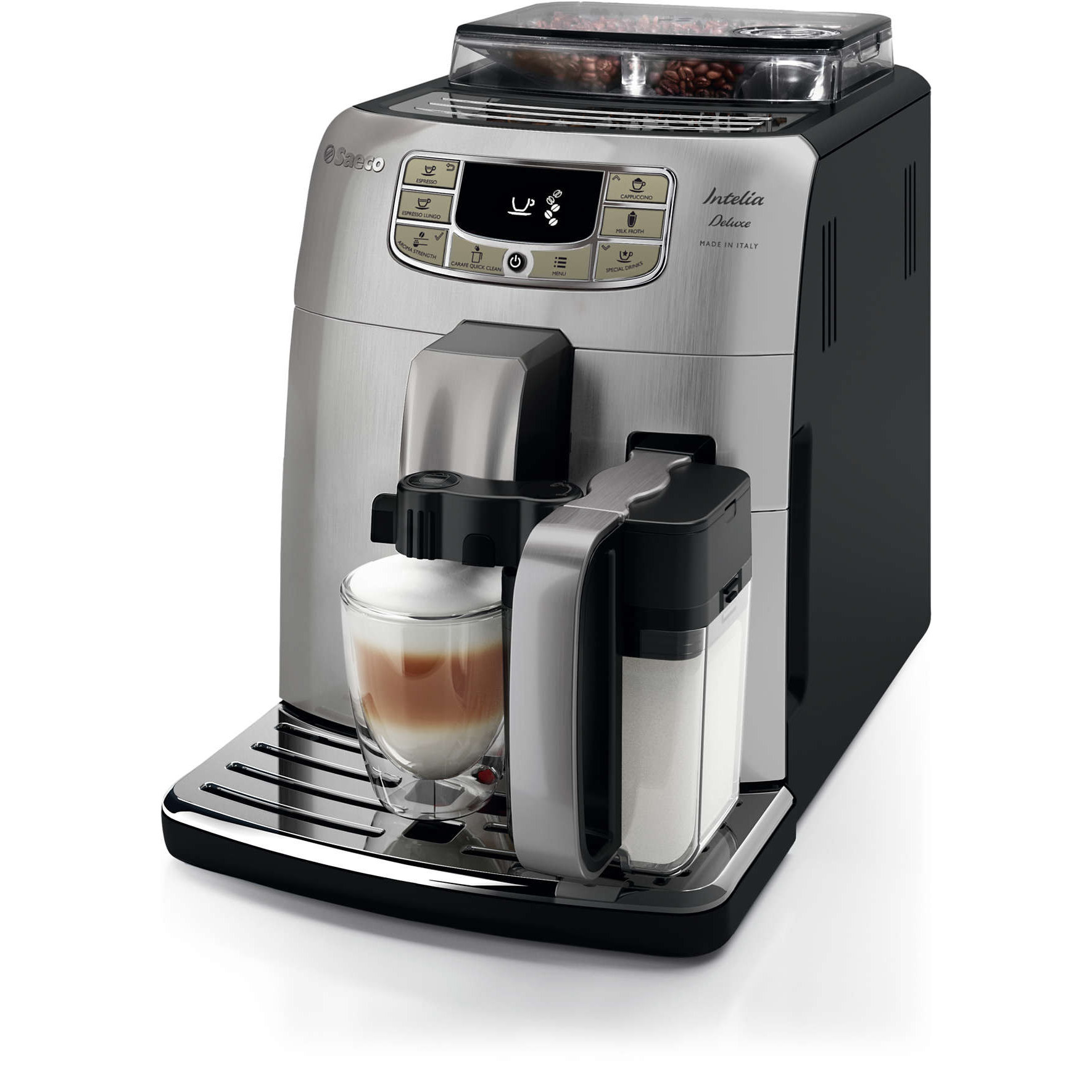
grind levels (for example, 5 in Saeco Incanto/Gaggia Anima vs 10 in Saeco PicoBarista).The same grinder with flat ceramic burrs, however, cheaper models have intentionally limited settings of:.For example, any Saeco/Gaggia automatic espresso machine has: It is the situation when the manufacturer limits the functionality of cheap models for marketing reasons.
#Saeco espresso machine automatic manual
The differences will be in automatization, manual or automated milk frothing, materials used, programmable settings and other extra functions. That’s why the cheapest Saeco’s X-Small espresso machine will make you the same espresso on default settings as top-notch Saeco PicoBaristo HD8927 (Granbaristo is an exception again). The ‘chassis’ – main parts and general construction scheme – is the same in any model within brand range. Here is a great example – Saeco Intelia HD8771/93 and Gaggia Velasca RI8263/47: Cheap vs Expensive Models – the same espresso on default settings The price tag and warranty conditions being the only difference. Moreover, there are identical machines sold under both brands.

De’Longhi, by the way, can use up to 14 grams/0.5oz of beans for one espresso.

The only exception is Saeco Granbaristo which has a slightly different brewing unit with enlarged capacity – up to 16 grams/0.56oz of coffee beans per serving compared to 11 grams/0.38oz in any other Saeco or Gaggia model. That’s why all three brands use the same parts and technologies in their home espresso machines. Gaggia and Saeco are subsidiaries of Philips.

Saeco vs Gaggia – there are no differences between the two brands For manual espresso machines comparison click here. Please note that this review covers only super-automatic espresso machines with a built-in grinder, which can make you an espresso in one touch. For more detailed information please read my reviews. In this article, I will give general information (similarities, differences, pros, cons) about Saeco and De’Longhi machines and a brief model-to-model comparison.


 0 kommentar(er)
0 kommentar(er)
